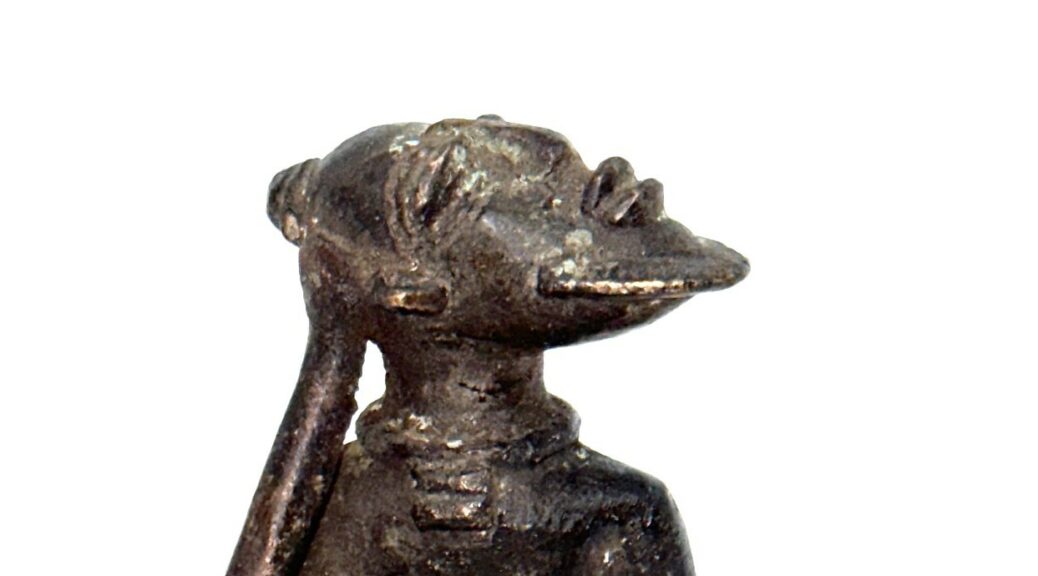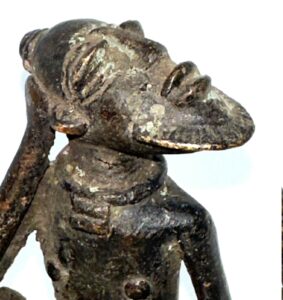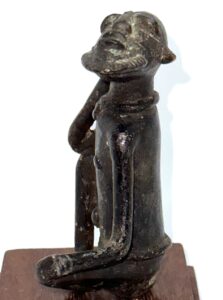MAK 1122-1
Djenne bronze anthropomorphic sculpture of a seated bearded man, Mali
The Djenne culture of Mali produced some of the most remarkable and unique sculptures ever found from this period, and this bearded gentleman is no exception. Made of beautifully cast bronze, he sits quietly before us, almost majestically with his right hand to his head in a philosophical pose. Traditionally, however, he is typical of the Djenne style. One of his most notable traits is his expression. The long arms and folded legs emphasize his stature. It is this kind of sculpture that made the Djenne pieces so unique.
This piece is from the Dogon people of the town of Djenne, Mali Upper Niger River and shows a 14th to 15th century bronze figure. The piece shows the correct ir patina for its age and is truly a museum quality piece. The old town of Djenné, Jenne-Jeno, was founded around 800 on an island in the inner Niger Delta of Mali (Schaedler 1997: 32). Trade relations with countries north of the Sahara resulted in both economic prosperity and an exchange with Islamic cultures, which is reflected in some of the artistic images of the Djenné sculpture. Most of the works discovered at the site of the ancient Djenné date between the 12th and 16th centuries; they were found during the annual flooding of the Niger Delta, where the water reveals objects from the overlying soil.
Origin: Mali Est. Circa 14th century AD to 16th century AD
Dimensions: Height: 10 cm, Width: 8 cm, Depth: 5 cm – Weight 650 grams.
Condition: Nice patina of copper oxides
Provenance: French private collection, assembled in situ during the 1950s.
Djenne’s art and history
Djenne art is high on the favorite list of collectors of African tribal art. The striking and distinctive figures, either made in terracotta or bronze, sell for enormous prices at the world’s leading auction houses and are among the favorite acquisitions of museums and collectors.
Djenné is the oldest known city in Africa south of the Sahara. Djenné, which was founded between 850 and 1200 AD. of Soninke merchants, served as a trading post between traders from western and central Sudan and those from Guinea, and was directly connected to the important trading city of Timbuktu, located 400 kilometers downstream on the Niger River. It was captured by the Songhai emperor Sonni ‘Ali in 1468. Historically, Djenné was known as a center of Islamic learning, attracting students from across the region who were followers of the Muslim faith. A very large number of terracotta sculptures have been found in the interior of the Niger River in Mali, dating from the last centuries of the first millennium AD. through the 15th century. The style is often referred to as the “Djenné” (or Jenne) style, named after a city that rose to prominence in this area in approximately 500 AD. and experienced great progress until the end of the 15th century.
Request price for Djenne Bronze




